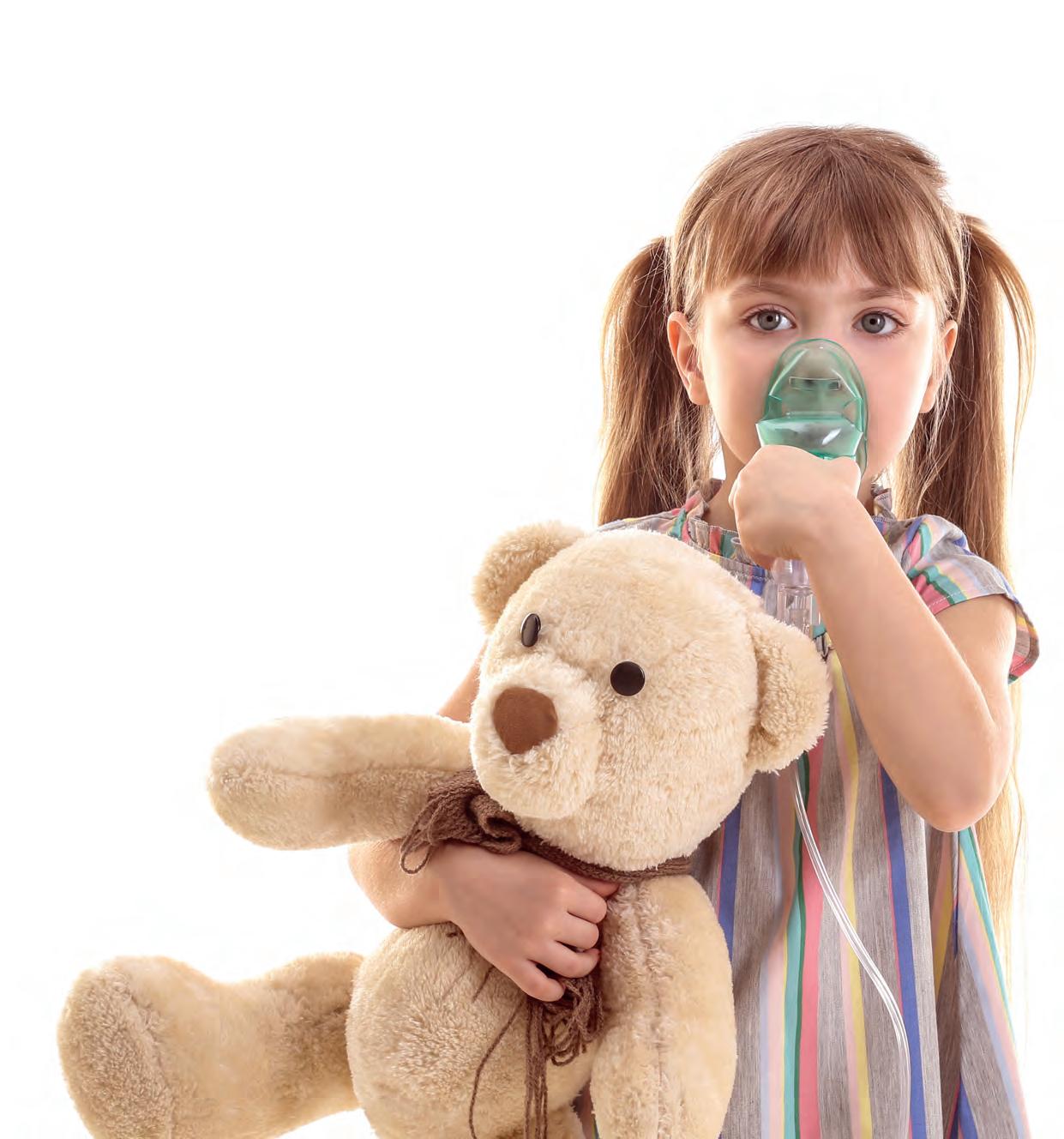
2 minute read
Are Your Children Suffering from Respiratory Ailments?
With the start of the global COVID pandemic in late 2019, respiratory conditions in children actually reduced due to various factors, including lockdowns and remote learning which exposed children less to other regular infections, also. But with the omicron variant emerging as the main strain along with the start back of face-to-face learning, respiratory and other infections including COVID are increasing in children. Dr. Rimzim Gupta, Specialist Pediatrician explains more.
OVERVIEW
Advertisement
According to Dr. Gupta, while a cough and a cold are very common complaints (and most of the time are indicative of minor illness), they may be indications of more sinister conditions like pneumonia and asthma, especially if associated with fever and breathing difficulty. “Most of the respiratory illnesses in children are the result of either allergies or infections,” she says. “In infancy, the allergic conditions mainly present as skin problems and diarrhea while in toddlers and older children they present with rhinitis and/or wheezing apart from skin manifestations.”
KEY RESPIRATORY ILLNESSES IN CHILDREN

The key respiratory illnesses in children, details Dr. Gupta, are acute nasopharyngitis (common cold), upper respiratory tract infections, childhood asthma, and pneumonia. She adds, “While it is crucial to diagnose and treat bacterial infections, especially pneumonia, viral infections are usually selflimited and occur as minor illnesses.” The good news is that with the advent of good vaccination coverage, respiratory infections have reduced to some extent, but she points out they still continue to be a major issue in children; especially bacterial pneumonias, and contribute to a major portion of hospitals admissions. While influenza and other viral infections are responsible for most upper respiratory tract infections.
TREATMENT MODALITIES
As far as the treatment is concerned, Dr. Gupta advises that a simple cough and cold without fever or respiratory difficulty can be managed at home by simple cough and cold home remedies or medications. “Here it is important to note that in a child with comorbidities like chronic lung disease, congenital heart disease, or immunodeficiency, even viral infections lead to severe symptoms and secondary bacterial infections,” she says. “Bacterial infections, though usually more severe, but if diagnosed early and treated with appropriate antibiotics, respond fast to treatment.”
LIFESTYLE WELLNESS TIPS TO PREVENT RESPIRATORY ILLNESSES
Managing your home environment: regular vacuuming can minimize indoor air pollution. Avoid smoking indoors, practice good sanitization habits, and regular servicing of air conditioners can help. The home should also have good ventilation and sun exposure. Promote hand hygiene in children. Adhere to a proper diet, this includes a balanced diet with hygienic home cooked food and with all fruits and vegetables properly cleaned. Timely vaccinations are recommended. Avoidance of known allergens, if any for the individual child, is highly recommended. H










